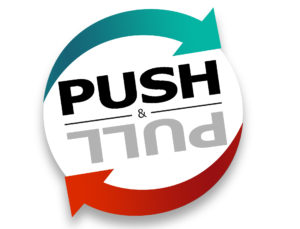 The “push” demand is created by the Fiber laser as it produces up to four times more parts than a conventional CO2 laser, depending on power levels, directly impacting press brake and other downstream capacities. At this point it does not make sense to have stacks of cut parts at the press brake and not have the capacity or the throughput capabilities to take advantage of the increased productivity from the fiber laser. For this reason the “push” demand demands equal attention as the “pull” demand.
The “push” demand is created by the Fiber laser as it produces up to four times more parts than a conventional CO2 laser, depending on power levels, directly impacting press brake and other downstream capacities. At this point it does not make sense to have stacks of cut parts at the press brake and not have the capacity or the throughput capabilities to take advantage of the increased productivity from the fiber laser. For this reason the “push” demand demands equal attention as the “pull” demand.
The push demand is where bending technologies and process management come into play. Eliminating non-productive time and utilizing the latest press brake technologies plays a major role in increasing productivity and creating additional capacity. Most of the non-productive time in bending can be found during the setup process.
Reducing Non-Productive Time
Optimizing at the software “pull” level can already help with reducing non-productive times by utilizing offline programs that contain all of the setup information for the operator. Bending programs can be loaded utilizing a bar code reader. Setup of the bend stations is assisted by an optical bend guiding system that utilizes LED lights along the ram to help position the tooling. Once the bending operations start, the optical bend guiding system will also inform the operators of which bending station is active and also the position of the back gauges for each bend. A safety camera system will help to ensure that the correct tooling is installed. It also enables quick speed transitions from approach to bending and then to retract speeds, all the while keeping operations safe. A large touch screen graphically displays the tool station, the back gauges, and the part in 3D, as it should be located and oriented prior to each bend.
Press Brake Size Matters
Utilizing a correctly sized press brake for the job also has a major impact on productivity. Utilizing a small tonnage brake for small or thin parts can boost productivity significantly as the machine is able to accelerate and decelerate the ram and back gauges much faster than a larger tonnage brake.
Satisfying the “Push” Demand
Each of the above mentioned technologies and techniques will help to create a more productive press brake operation and help satisfy the “push” demands created by the Fiber laser. It’s no longer how a single piece of machinery will affect the fabrication process, but how all the machines and supporting automation and software technologies work together to create a cohesive and effective fabrication and business solution.
By Frank Arteaga, Head of Product Marketing, NAFTA Region
Bystronic Inc., Elgin, IL – Voice.bystronic@bystronic.com
